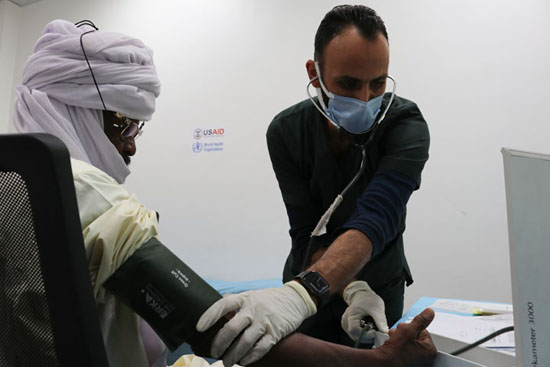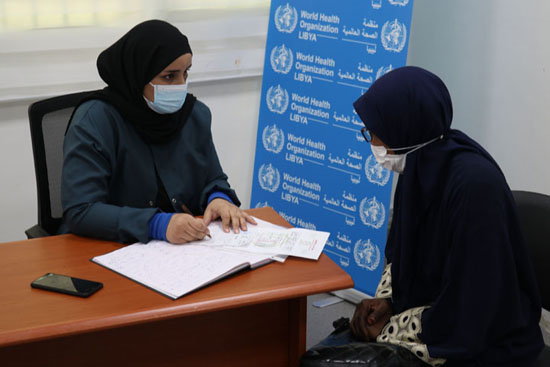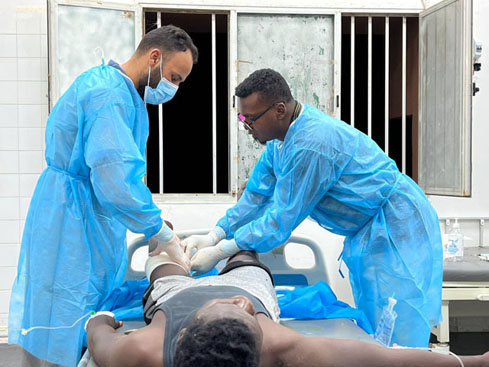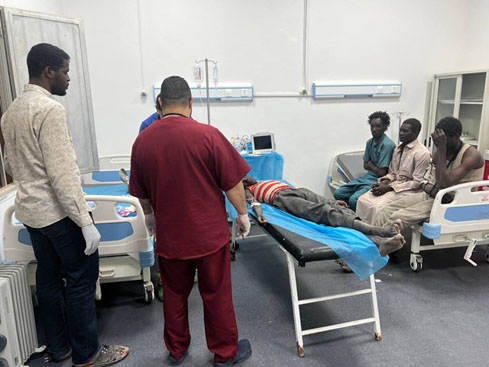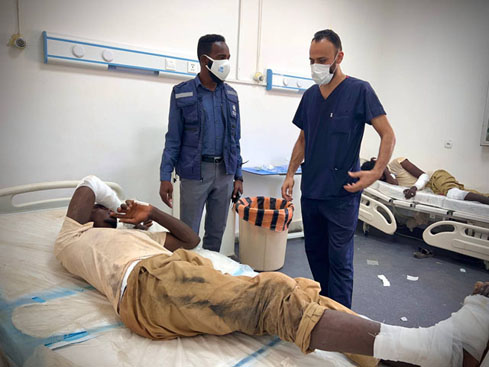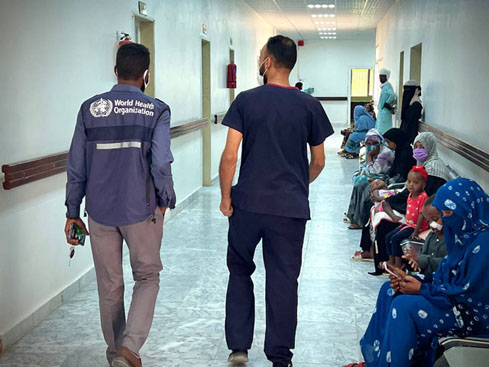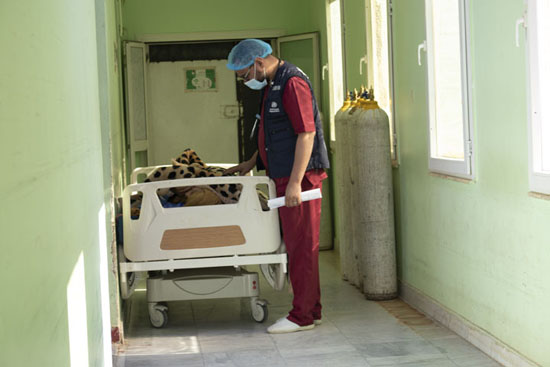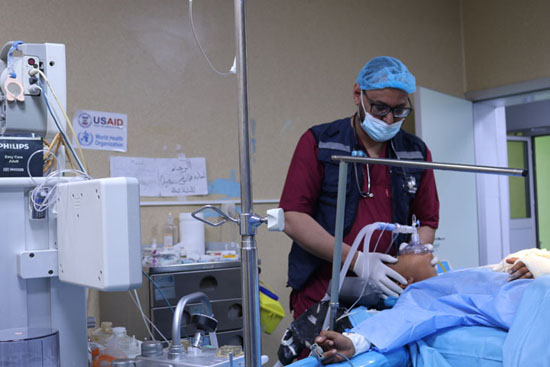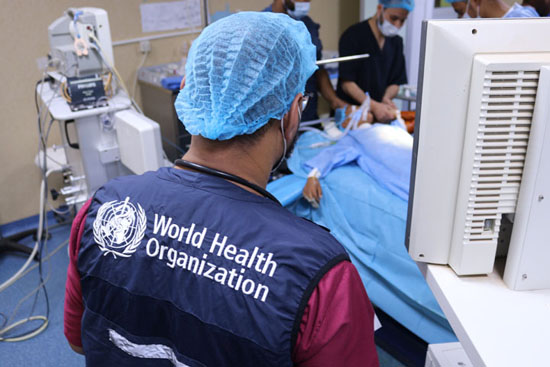With generous support from the United States Agency for International Development (USAID), the World Health Organization (WHO) deployed 24 emergency medical teams (EMTs) to more than 30 health facilities in Libya in 2022. The teams provided 321 542 medical procedures, including 3906 surgical interventions.
“Over the course of 2022, WHO provided 24 emergency medical teams to the Libyan Ministry of Health to support health services for vulnerable populations in the southern region in Libya. Their emergency interventions have helped people in great need and saved many lives.” said Ms Elizabeth Hoff, WHO Representative in Libya.
For the past decade, prolonged conflict, fragmented governance, mismanagement, and insufficient funding have disrupted Libya’s already fragile and severely damaged health system. Even before further exacerbated by COVID-19, almost half of the primary health care centres are either partially or not functioning and require technical and financial support to fully operate and provide essential health services.
WHO remains committed to supporting and helping Libya rebuild its health system. Working across 22 districts in all Libya, WHO provides fully equipped health facilities and deploys emergency medical teams across the country.


